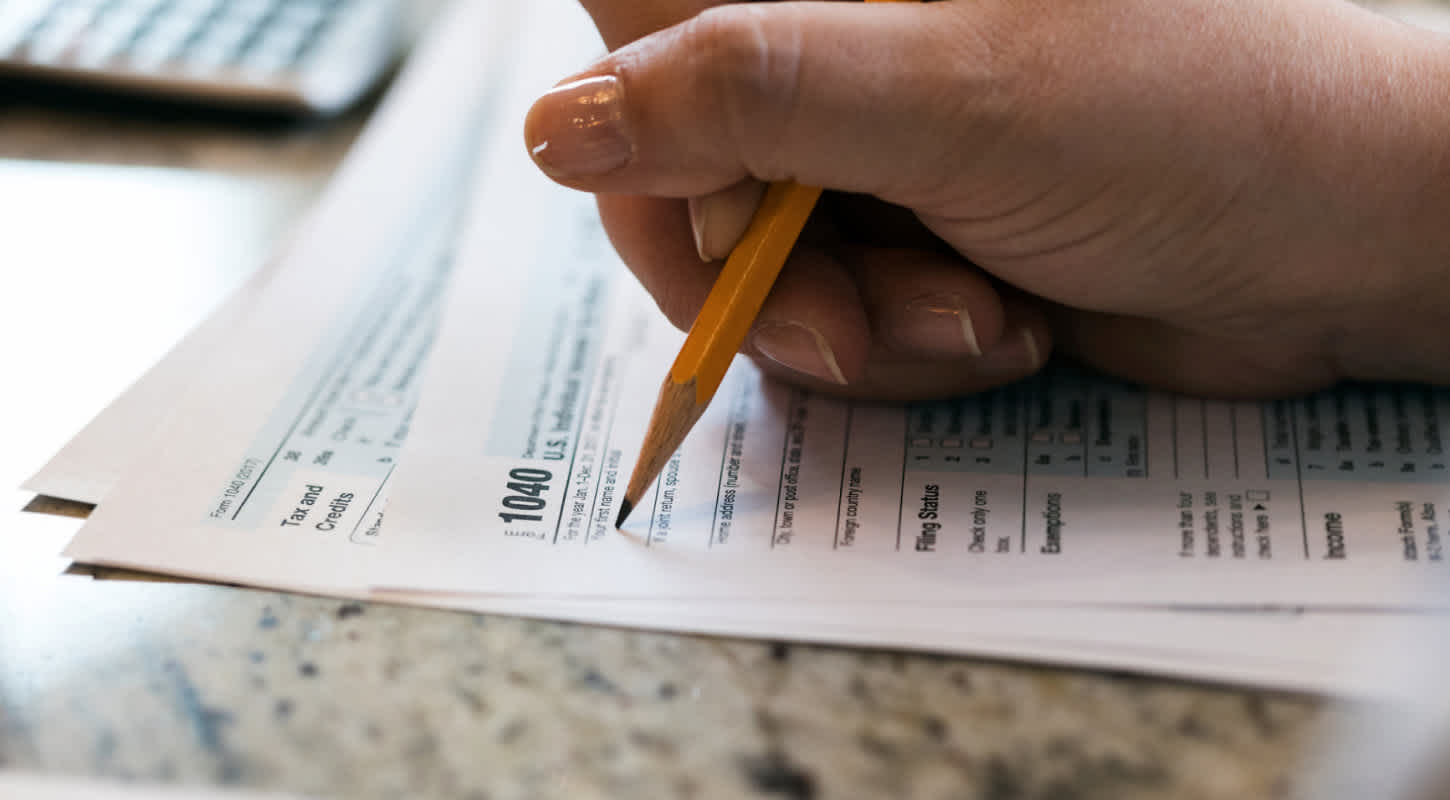
Disclaimer: Fabric by Gerber Life and its affiliates do not provide tax, legal or accounting advice. This material has been prepared for informational purposes only, and is not intended to provide, and should not be relied on for, tax, legal or accounting advice. This material does not constitute a recommendation to engage in or refrain from a particular course of action. The information below is not tailored for any individual. You should consult your own tax, legal and accounting advisors before engaging in any transaction.
A custodial account such as a UGMA (“Uniform Gifts to Minors Act”) or UTMA (“Uniform Transfers to Minors Act”) can make it easier to save and invest money on your child’s behalf. Even when your child is too young to understand allowance, never mind investments, you can set gifts aside for their future. (If you don't already have one, you can open a UGMA through Fabric by Gerber Life.)
Managing a UGMA or UTMA also means you’ll have to handle taxes on your child’s behalf until they’re old enough to take charge of the account. Fortunately, taxes on a UGMA don’t have to be complicated. Here’s what to look out for as you plan contributions to a UGMA account and what the IRS is likely to expect from you at tax time.
What Money in a UGMA Is Taxable?
UGMA accounts, unlike 529 education savings accounts, do not grow tax deferred. Interest, dividends or capital gains on funds in your child’s UGMA account may be subject to taxes.
Certain tax rules or taxable thresholds typically update every year, so it’s smart to keep an eye out for changes.
Your child can have two basic categories of income, earned and unearned. Earned income refers to money they make through work. Unearned income that they don’t work for includes interest and gains on investments, such as growth on funds in their UGMA account.
For 2023, dependents (i.e., your kids) have a standard deduction of $1,250 on unearned income. If a custodial account like a UGMA or UTMA grows enough to take your child’s unearned income over that $1,250 mark, the Kiddie Tax rule kicks in. The unearned income between $1,250 and $2,500 is taxed at the child’s tax rate (i.e., the child’s marginal tax rate after any applicable deductions, which a tax professional can help you apply). Provided that you probably earn more money than your child, your child’s tax rate is likely lower than your own. Unearned income over $2,500 is taxed at the parent’s rate.
If your child’s UGMA account earned less than $1,250 in interest, capital gains and dividends, and they don’t have other income you need to report to the IRS, then you generally won’t have to file or pay taxes for them that year. Growth can change year by year, though, so it’s important to review their UGMA at least annually to see if gains exceed the threshold to file a tax return.
Do UGMA Taxes Go on My Tax Return or My Child’s?
As the parent, in many cases you’re the custodian of a UGMA or UTMA account. But the money belongs to your child, so whose tax return should you use to file any taxes?
A child’s earned income generally needs to go on the child’s own tax return. If your child only has unearned income, you can generally choose whether to include this on your tax return or fill out a separate return for your child.
You should talk with a tax professional to learn about the best way to file based on your particular situation. After your child is old enough to take control of the account, they’ll need to file their own taxes for unearned income.
What Do I Need in Order to File UGMA Taxes?
If you want to bundle your child’s UGMA account in with your tax return, you’ll need Form 8814, which can also give you information about what income limits are high enough to require a separate tax return.
You should expect to receive a 1099 with information about interest, dividends or capital gains on the account, probably around late January or February. You should also collect any receipts or records you have if you made any withdrawals to pay for expenses on your child’s behalf. Ask your tax professional if there’s anything you need to do to show how you’re managing the funds.
If a grandparent or another relative is the one in charge of the UGMA account, parents should be in touch with them in case they need help filling out tax paperwork or having your child sign tax documents (kids 14 years and older are legally required to sign their own tax forms in most cases).
How Taxes Work for UGMA Account Contributions
There are no tax credits or deductions for contributions you make to a UGMA or UTMA account. The main advantages of a UGMA are that it’s much less expensive than setting up a trust, and it’s a convenient way to save and invest financial gifts for your child.
You can give up to $17,000 in 2023 ($34,000 for married couples filing jointly) per gift recipient before facing gift taxes. So unless you’re planning to exceed those limits, you don’t need to factor in any tax consequences.
One distinction to keep in mind between UGMA accounts and 529 accounts for college savings is the five-year gift tax averaging rule. IRS code 529(c)(2)(B) allows gift-givers to “superfund” a 529 with up to five times the annual gift limit in a single year without the excess counting toward gift tax limits. The gift is treated as being spread evenly across a 5-year period.
UGMA accounts don’t offer this superfunding option—and you might not want them to. UGMA and UTMA accounts are in your child’s name, so they’re considered a student asset in terms of college financial aid. That means funds in the account will lower financial aid eligibility at a higher rate than funds in a parent-owned account. A UGMA account can be a helpful, flexible way to help save money for your child’s higher education years and beyond, but you should consider your overall financial picture to determine what’s the right target amount to balance between their futures and looking out for college financial aid.
Are UGMA Withdrawals Taxed?
When your child comes of age, they’ll have to file and pay their own taxes on taxable gains to the account each year. But contributions to a UGMA come from your after-tax dollars. As a result, your child won’t have to pay additional taxes on withdrawals from a UGMA or UTMA account. They also won’t face any penalties, because they don’t need to use funds on specific qualifying expenses the way they would with a 529 account.
A UGMA account or other custodial account can be a good way to grow and protect money for your child’s future. As your child grows, you may need to change how you file UGMA account taxes, especially if your child starts working or their income grows. Talk to a tax professional to set goals or answer questions about the best way to manage your child’s UGMA account.
Want to compare even more options. Here are the merits of UGMAs vs. leaving money to your kids in a will.
Fabric exists to help young families master their money. Our articles abide by strict editorial standards.
Information provided is general and educational in nature, is not financial advice, and all products or services discussed may not be offered by Fabric by Gerber Life (“the Company”). The information is not intended to be, and should not be construed as, legal or tax advice. The Company does not provide legal or tax advice. Consult an attorney or tax advisor regarding your specific legal or tax situation. Laws of a specific state or laws relevant to a particular situation may affect the applicability, accuracy, or completeness of this information. Federal and state laws and regulations are complex and are subject to change. The Company makes no warranties with regard to the information or results obtained by its use. The Company disclaims any liability arising out of your use of, or reliance on, the information. The views and opinions of third-party content providers are solely those of the author and not Fabric by Gerber Life.

Written by
Jessica Sillers
Related Posts
Saving/Investing for Kids
The New Parent's Financial Checklist: Life Insurance and More
When you have a baby, there’s a lot to consider. Now's the time to focus on your financial priorities. Here's where to get started.
By Allison Kade
Saving/Investing for Kids
What Is an Investment Time Horizon?
An investment time horizon is the amount of time you’ll hold an investment. Your investment time horizon is essential in determining how much risk it makes sense for you to take in investing.
By Jessica Sillers
Saving/Investing for Kids
Financial Tips for Back-to-School Season
Back-to-school savings tips, holiday prep and other planning can help you save money and set yourself up for a successful school year.
By Jessica Sillers
Fabric Picks
Saving/Investing for Kids
How to Do 30 Days of Financial Self-Care as a Parent
Self-care comes in many forms, including how you handle your money. See how small steps may add up to help improve your financial well-being.
By Jessica Sillers
Life insurance
What to Do at the End of Your Life Insurance Term
Term life insurance, by definition, ends. Check that you’re ready for a smooth transition out of your policy, or take steps to continue the best coverage fit for you.
By Jessica Sillers
Saving/Investing for Kids
Investing Strategies for Beginners
Investing can be a sound strategy to help grow your finances over time. Start by identifying which strategy and account type works best for you.